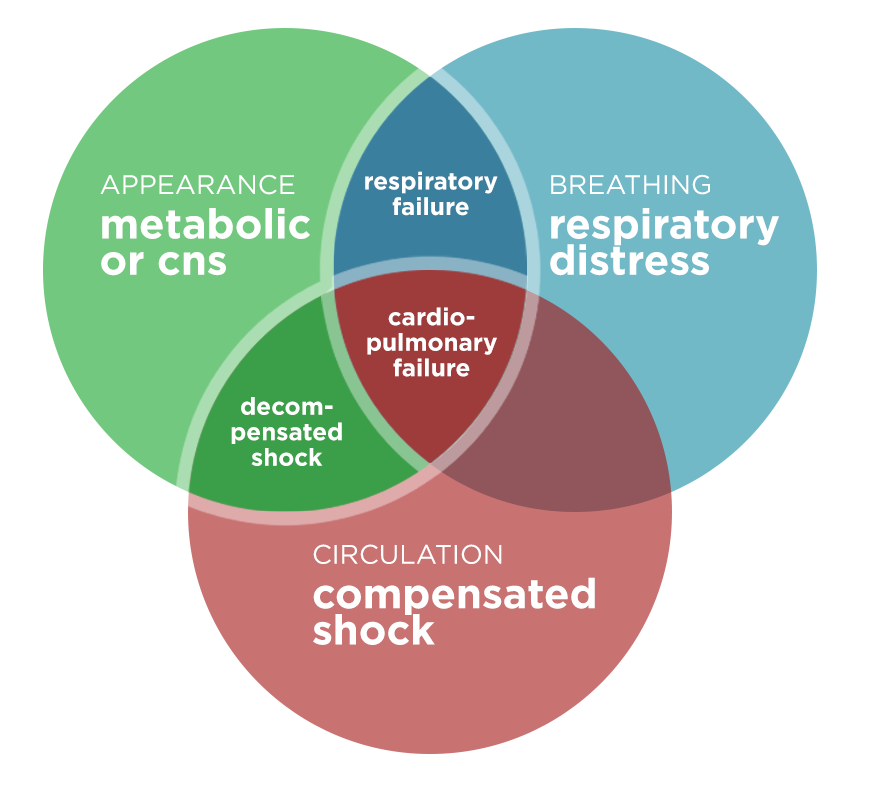This post presents a tool for the rapid assessment of the cardiopulmonary status and cerebral/metabolic function of critically ill pediatric patients. The purpose is not to establish a diagnosis, rather to identify the particular physiological derangements to prioritize initial interventions. The tool was initially designed as a “triangle” – it has been adapted here (with permission) as a Venn diagram.1
Pediatric Assessment Diagram
Assessment of Appearance
- Tone: Moves spontaneously, resists examination
- Interactivity: Interacts with environment, reaches for items
- Consolability: Comforted by caregiver
- Gaze: Makes eye contact
Assessment of Work of Breathing
- Airway Sounds: Stridor, grunting, wheezing
- Position: Tripod
- Retractions
Assessment of Circulation
- Pallor
- Mottling
- Cyanosis
Management
| Impression | Interventions |
|---|---|
| Respiratory distress |
|
| Respiratory failure |
|
| Shock (compensated and decompensated) |
|
| CNS/Metabolic |
|
| Cardiopulmonary Failure |
|
References:
- The pediatric assessment triangle: a novel approach for the rapid evaluation of children. Pediatr Emerg Care. 2010;26(4):312-315. doi:10.1097/PEC.0b013e3181d6db37.


Pingback: Approach to the Unwell Child – The Doctor